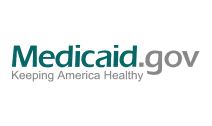What is Cancer?
Normal cells in the body grow, divide, and are replaced on a routine basis. Sometimes, cells divide abnormally and begin to grow out of control. These cells may form growths or tumors. Tumors can be benign (not cancer) or malignant (cancer). Benign tumors do not spread to other body tissues. Cancer tumors can invade and destroy nearby healthy tissues, bones, and organs. Cancer cells also can spread to other parts of the body and form new cancerous areas.
What Causes Cancer?
Cancer is caused by several different factors. A few types of cancer run in families. These types are called “hereditary” or “familial” cancer. They are caused by changes in genes that can be passed from parent to child. Changes in genes are called mutations.
What is Hereditary Breast and Ovarian Cancer Syndrome?
Hereditary breast and ovarian cancer (HBOC) syndrome is an inherited increased risk of breast cancer, ovarian cancer, and other types of cancer. HBOC syndrome is linked to mutations in several genes, but the most common are called BRCA1 and BRCA2.
What are BRCA1 and BRCA2?
BRCA1 and BRCA2 are tumor suppressor genes, which means that they keep cells from growing too rapidly. Everyone has these genes. Changes or mutations in these genes mean they do not work properly and cells can grow out of control, which can lead to cancer.
How Much Do BRCA Mutations Increase the Risk of Breast Cancer?
The risk of breast cancer for the average American woman is about 12% in her lifetime. Having a BRCA mutation greatly increases the risk. The estimated risk of breast cancer in women with a BRCA mutation is 45–85% by age 70 years.
How Much Do BRCA Mutations Increase the Risk of Ovarian Cancer?
The risk of ovarian cancer for the average American woman is about 2% in her lifetime. The estimated risk of ovarian cancer in women with a BRCA1 mutation is 39–46% by age 70 years. For women with a BRCA2 mutation, the risk of ovarian cancer by age 70 years is 10–27%.
Do BRCA Mutations Increase the Risk of Other Types of Cancer?
Yes. Women who have a BRCA mutation also have an increased risk of cancer of the fallopian tube, peritoneum, pancreas, and skin (melanoma). Men who have a BRCA mutation have an increased risk of cancer of the breast, prostate, and pancreas.
How Common are BRCA Mutations?
About 1 in 300 people to 1 in 800 people carry a BRCA1 or BRCA2 mutation. Anyone can have these mutations, but they are found more often in certain ethnic groups. These groups include people of the following backgrounds:
- Eastern or Central European Jewish
- French Canadian
- Icelandic
Should I Be Tested for BRCA Mutations?
Your obstetrician–gynecologist (ob-gyn) or other health care professional should ask you questions about your personal and family history of breast cancer and ovarian cancer. The questions may include the following:
- Have you had cancer of the ovary, fallopian tubes, or peritoneum?
- Have you had breast cancer at age 45 years or younger?
- Have you had breast cancer and do you have a close relative with breast cancer at age 50 years or younger, or a close relative with cancer of the ovary, fallopian tubes, or peritoneum?
- Have you had breast cancer and do you have two or more close relatives with breast cancer at any age?
- Have you had breast cancer and do you have two or more close relatives with cancer of the pancreas or prostate?
- Have you had breast cancer and are you of Eastern or Central European Jewish ancestry?
- Do you have a close relative with a BRCA1 or BRCA2 mutation?
If your answers to these or other questions suggest that you may have a BRCA mutation, genetic counseling and testing may be offered.
What is Genetic Counseling?
Before you have genetic testing, a genetic counselor or a physician who specializes in inherited types of cancer can help you understand how the testing is done, what the results may mean, and what you may do depending on the test results.
Why Don’t Doctors Test Everyone for BRCA Mutations?
BRCA testing is only recommended for people with a high risk of having BRCA mutations. It is important to remember that most cases of breast and ovarian cancer are not caused by gene mutations. If there is a low chance of finding a BRCAmutation, your ob-gyn or other health care professional may not recommend genetic testing.
How is Testing for BRCA Mutations Done?
Genetic testing requires a sample of blood or saliva. There are several ways that testing can be done:
- If a relative with breast cancer or ovarian cancer is available, the relative’s BRCA genes can be analyzed. If your relative carries a mutation, you can have testing to see if you have the same mutation as your relative. This is the best way to know if you are at increased risk of cancer.
- If no relative is available, and you and your family belong to an ethnic group with high numbers of people with a specific BRCA mutation, you can be tested for this mutation.
- If you are not part of a high-risk ethnic group but your family history suggests there may be a hereditary mutation, another option is to have testing of your BRCA genes. If your family has a member with breast cancer or ovarian cancer, it is always best to test that relative first. But if that is not possible, you may have individual testing and counseling.
What Does a Negative Test Result Mean?
A negative test result can mean several things:
- When a family member with cancer gives a sample and a BRCA mutation is found, you can be tested for that mutation. If you have a negative test result for that BRCA mutation, you have not inherited it and your risk of cancer is the same as the general population.
- If you have a family history of cancer but no family member with cancer has given a sample, and you have a negative test result for a BRCA mutation, it can mean that your family has a BRCA mutation but you did not inherit it. It also can mean your family carries a mutation in a gene that researchers have not yet identified.
What Does an Unclear Test Result Mean?
An unclear test result means there is a change in a BRCA gene, but it is not known whether the change increases the risk of cancer. Researchers continue to study BRCA and other genes to find out how they may influence cancer risk. If you have an unclear result, a genetic counselor can explain strategies that may reduce your risk.
What Does a Positive Test Result Mean?
A positive test result means you have a BRCA mutation for which you have been tested. That means you have an increased risk of getting cancer. It does not mean you will get cancer. There is no test that can tell which women with a BRCA mutation will develop cancer or at what age. It is important to discuss your results with your genetic counselor and learn what you can do to decrease your risk of cancer.
Having a BRCA mutation means you can pass the mutation to your children. Your siblings also may have the gene mutation. You are not obligated to tell your family members, but sharing the information could be life-saving for them. With this information, your family members can decide whether to be tested and get cancer screenings at an early age.
How Can You Prevent Cancer if You Test Positive for a BRCA Mutation?
If you test positive for a BRCA mutation, you may discuss prevention options with your ob-gyn, genetic counselor, or other health care professional. Prevention includes screening tests, medications, and surgery.
What Breast Cancer Screening Tests are Available?
Breast cancer screening may include the following tests for women with BRCA mutations:
- Clinical breast exam by your ob-gyn or other health care professional every 6–12 months
- Annual breast imaging starting at age 25 years. Magnetic resonance imaging (MRI) is recommended annually for women aged 25–29 years. Beginning at age 30 years, breast MRI and mammography are recommended annually.
What Ovarian Screening Tests are Available?
Currently there is no recommended screening test for ovarian cancer for average-risk patients. For high-risk patients, one ovarian cancer screening method that has been studied is a blood test that measures levels of a marker called CA 125. A marker is a substance made by cancer cells. Levels of CA 125 sometimes are increased in women with ovarian cancer. An ultrasound exam of the ovaries also may be recommended for women with a BRCA mutation. If your ob-gyn or other health care professional recommends these tests, you may begin testing between the ages of 30 years and 35 years.
It is important to know that these screening tests have a limited ability to find ovarian cancer at an early, more treatable stage. Test results may be normal even when cancer is present. There also is a high rate of false-positive results (a positive test result in someone who does not have ovarian cancer). There are ongoing studies to find an accurate and reliable screening test for ovarian cancer.
What Medication Can Help Prevent Breast Cancer?
A medication called tamoxifen has been shown to reduce the risk of breast cancer in women with BRCA2 mutations. Tamoxifen is a drug that blocks the effects of estrogen on cancer cells that respond to this hormone.
Tamoxifen works better in women with BRCA2 mutations because most breast cancer tumors in this group grow in response to estrogen. Tamoxifen does not appear to reduce breast cancer risk in women with BRCA1 mutations because fewer cancer tumors in this group respond to estrogen.
What Medications Can Help Prevent Ovarian Cancer?
Combined hormonal birth control pills (those that contain estrogen and progestin) have been shown to reduce the risk of ovarian cancer. The longer a woman takes the pill, the more the risk is reduced—for every 5 years on the pill, a woman reduces her risk by about 20%. But this benefit needs to be balanced against the risks of using the pill. The pill is safe for most women, but it is associated with a small increased risk of deep vein thrombosis (DVT), heart attack, and stroke. Your ob-gyn or other health care professional can help you understand how to balance the benefits and risks of using the pill.
Can Surgery Help Prevent Breast Cancer?
Yes. Surgical removal of both breasts is called risk-reducing bilateral mastectomy. It can reduce the risk of breast cancer by 85–100% in women with a BRCA mutation. Total mastectomy, in which all breast tissue is removed, including the nipple, is the most effective surgery for reducing the risk of breast cancer. Mastectomy that removes the breast tissue and leaves the nipple also can be considered and is very effective. Some women choose to have breast reconstruction after a mastectomy.
What are the Side Effects of a Mastectomy?
Side effects of a mastectomy can include the following:
- Pain, tenderness, or swelling
- Buildup of blood or fluid in the wound or arms
- Limited arm or shoulder movement
- Numbness in chest or arm
- Burning or shooting pain in the chest, armpit, or arm
- Inability to breastfeed
Can Surgery Help Prevent Ovarian Cancer?
Yes. The removal of both ovaries and both fallopian tubes is called risk-reducing bilateral salpingo-oophorectomy. In women with a BRCA mutation, this surgery can reduce the risk of ovarian cancer by about 80%. The surgery also reduces the risk of cancer of the fallopian tubes and peritoneum. If it is done before menopause, this surgery also can reduce the risk of breast cancer. Women with a BRCA mutation should consider this surgery between the ages of 35 years and 40 years or after they have completed childbearing. Some women may be able to delay slightly longer. Removal of the ovaries means you will not be able to get pregnant.
Researchers also are studying the removal of only the fallopian tubes (salpingectomy) to prevent ovarian cancer. Some cases of ovarian cancer may start in the fallopian tubes, so removing the tubes may help prevent ovarian cancer without putting a woman into menopause. More research is needed in this area.
What are the Side Effects of Removing the Ovaries?
Removal of the ovaries before menopause will cause you to go through menopause immediately. This is called surgical menopause. Symptoms may be more severe than if you were to go through menopause naturally over several years. Menopause symptoms often can be managed with hormone therapy and other treatments. You can discuss these treatment options with your ob-gyn or other health care professional before your surgery.
What Else Should I Think About Before Choosing Risk-Reducing Surgery?
If you are thinking about having preventive surgery, you and your ob-gyn or other health care professional will discuss the risks and benefits. You should consider the psychological effects as well as short- and long-term complications. Timing of surgery should be based on your cancer risk, your desire to have children, and the effect that surgery will have on your well-being.
I am Concerned About Discrimination Based on Genetic Testing Results. What Should I Know?
Many people are concerned about possible employment discrimination or denial of insurance coverage based on genetic testing results. The Genetic Information Nondiscrimination Act of 2008 (GINA) makes it illegal for health insurers to require genetic testing results or use results to make decisions about coverage, rates, or preexisting conditions. GINA also makes it illegal for employers to discriminate against employees or applicants because of genetic information. GINA does not apply to life insurance, long-term care insurance, or disability insurance.
What Should I Know About Direct-to-Consumer Genetic Tests?
A direct-to-consumer genetic test is a genetic test that you can order over the internet. You do not need a doctor’s order for it. The American College of Obstetricians and Gynecologists discourages use of direct-to-consumer genetic tests because the results may be misleading. For example, one test for BRCA mutations only looks for three mutations, even though there are more than 500 BRCA mutations linked to cancer. The test results could cause unnecessary fear, or a false sense that you are not at risk. You should always see a health care professional if you want a genetic test.


















